Notice: Undefined variable: page in /home/vrxdg1855sn3/public_html/wp-content/themes/72tree/content.php on line 15
Notice: Trying to get property 'ID' of non-object in /home/vrxdg1855sn3/public_html/wp-content/themes/72tree/content.php on line 15
Power Line Interfering Trees & The City of Alpharetta Tree Ordinance
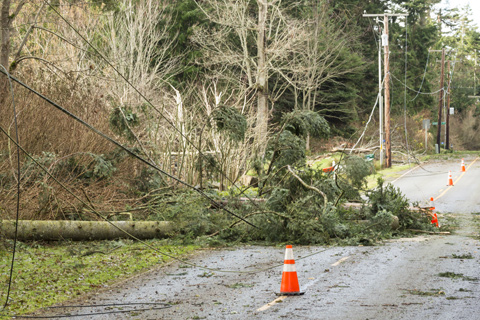
Whether you see trees interfering with power lines on your property or in the public right-of-way, it is important that you do not take matters into your own hands. When trees come in contact with power lines, they may break or bring the power lines crashing down. 72 Tree has seen this cause power outages in Alpharetta and notes these scenarios should be taken very seriously.
The trees are treated as seriously as the potential electrical hazard. The City of Alpharetta Tree Ordinance protects the city’s trees (both alive and dead) and imposes heavy fines for the unlawful cutting or removal of them.
Trees Interfering With Power Lines in the Public Right-of-Way
Alpharetta residents should report any tree on public property which poses a hazard to power lines by visiting Georgia Power or calling (888) 891-0938 and press option #2 – dangerous condition.
If storm-damaged limbs or a diseased tree has fallen and is obstructing the roadway, dial 9-1-1 (day or night) and provide as much information as possible for a swift and accurate response by emergency services. For occurrences in or on all other public property, contact the City of Alpharetta Arborist – David Shostak at (678) 297-6229.
Tree Branches Are Touching My Power Lines
When tree branches make contact with power lines, do not take any measures to correct the situation. Keep any and all ladders, equipment, and hands away from the tree and the power lines to avoid electrical shock.
In this situation, there are two options to safely have the situation mitigated:
Contact a tree professional properly licensed and trained to trim or cut the tree. Most professional tree services will make sure that the proper permits are acquired before starting any work.
Contact Georgia Power to advise of the tree and its potential danger. Georgia Power doesn’t attend to a single request on private property, typically they will cut and trim entire rows of trees. However, depending on the severity of the situation, they may respond or direct you to who can resolve the situation.
City of Alpharetta Ga Tree Ordinance
Specimen Trees – In the City of Alpharetta, specimen trees are provided special protection under the law. The damage, destruction or removal of these trees (dead or alive) without a permit may incur severe fines and penalties. There are also heavy replanting requirements when a specimen tree is lawfully removed. Contact the City arborist for further details regarding specimen trees at (678) 297-6229 or via email: treepermits@alpharetta.ga.us
Specimen tree size criteria is as follows:
Understory Trees – 8 inches DBH and greater
Overstory Trees – 24 inches DBH and greater
Pine Trees – 30 inches DBH and greater
DBH – “Diameter at Breast Height” is a standard measurement method of the diameter of the trunk of a standing tree. The diameter of the trunk is typically measured 4.5 feet above the ground (unless otherwise specified).
Tree Density Requirements – Tree density for single family residential property owners. The City of Alpharetta requires a minimum tree density on the property’s plantable area. Homes built prior to 1992, have a required minimum density of 20%. If built after 1992, a 30% minimum density is required.
For the determination of coverage for both understory and overstory trees, the City of Alpharetta provides a worksheet to accurately calculate the percentage. Questions on this matter should be directed to the City arborist at (678) 297-6229 or through email: treepermits@alpharetta.ga.us
For complete tree removal requirements in Alpharetta Ga, visit www.alpharetta.ga.us/government/departments/community-development/tree-removal
Seek Professional Advice Before Cutting or Trimming Your Tree
Before taking any action regarding trees in Alpharetta, seek the advice of an ISA Certified Arborist, tree cutting and removal service, or the City of Alpharetta’s Arborist Division. The potential cost of acting alone or out of haste is too great.
Always remember that when trees pose a hazard to life, taken down power lines, or have fallen and obstructed the road, stay clear of the affected area, do not drive over the power lines, and dial 9-1-1 for an immediate response.
Notice: Undefined variable: page in /home/vrxdg1855sn3/public_html/wp-content/themes/72tree/content.php on line 15
Notice: Trying to get property 'ID' of non-object in /home/vrxdg1855sn3/public_html/wp-content/themes/72tree/content.php on line 15
Trees, Shrubs, and the USDA Hardiness Zone Map
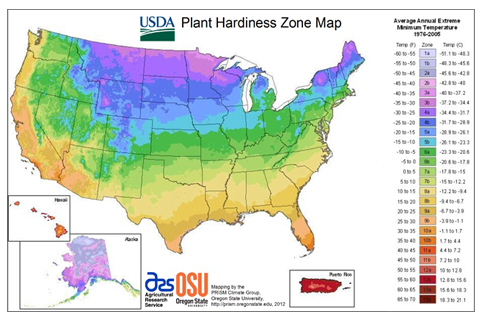
If you have ever gone into the nursery and picked a plant or tree, later to realize it was not suitable to be planted in the environment in which you live, this can be avoided. Besides the scientific plant name and care instructions, you will notice the hardiness zone printed on its tag.
The USDA Hardiness Zone Map splits North America up into 11 separate planting zones. Each individual planting zone is around 10°F colder (or warmer) than the adjacent zone during an average winter. If you’re reading a plant description in a gardening magazine and you see a mention of a hardiness zone, then it’s likely referring to the USDA Hardiness Zone map.
What are Hardiness Zones?
A hardiness zone is based on average annual extreme minimum temperatures across a 30-year period. It’s not based on the lowest recorded temperature in a region or what might possibly happen in the future. Gardeners must keep this in mind as they choose plants and trees, especially if they are planning to “push” the hardiness zone they live in by planting trees and plants not suited for that particular hardiness zone. Something else to keep in mind is that there could be microclimates that won’t show up on a map – even one as detailed as the current USDA PHZM map.
Eastern Zones vs Western Zones
Eastern Zones – The USDA map is great at its job of outlining the different gardening climates of the eastern half of North America. This is a comparatively flat area, which means it can be mapped out by drawing lines approximately parallel to the Gulf Coast around every 120 miles as you progress north. The lines will start to tilt northeast as the Eastern Seaboard approaches. The USDA map also accounts for the special climates caused by the Appalachian mountains and the Great Lakes.
Western Zones – A range of factors including winter lows, elevation and precipitation determine the growing climates in western North America. The weather in the west floats in from the Pacific Ocean, becoming less humid as it moves around the mountain ranges to the west. The growing climates in the west can vary quite a bit compared to the east, where cities in similar zones can grow the same plants in the same climates. The weather – and the plants that can be grown in it – in coastal Seattle are much different than what you can expect in the higher and more inland Tucson, Arizona. This is in spite of both cities being a part of zone 8 of the USDA map.
To find the zone for where you live, see http://planthardiness.ars.usda.gov/PHZMWeb/
Ideal Trees and Shrubs for Alpharetta and Roswell Ga
Many of our customer’s aim to improve their well-manicured yards with trees, shrubs, and flowers. Of course the right sunlight, soil, and moisture conditions are factors needed for these plants to flourish. After being asked for specific species, we created a short list of popular trees and common shrubs that will thrive in Alpharetta and Roswell Ga. 7a and 7b are the zones for North Georgia, so next time you visit the nursery, be sure to look for plants that are conducive to living in these zones.
Other Factors to Consider with the Hardiness Zone Map
There are other environmental factors that determine whether a plant succeeds or fails on top of the hardiness zones. Wind levels, soil type and moisture, humidity, pollution, winter sunshine, and snow are all major contributing factors to plant survival. Whether or not a plant survives can also depend on where it is planted, how it is planted, their size, and their overall health.
The map was most recently updated in 2012 when the USDA adjusted the plant hardiness map to account for the warmer global temperatures occurring over the past thirty years. Refer to this resource when purchasing trees and plants for your garden and landscape.
Interactive Map: http://planthardiness.ars.usda.gov/phzmweb/interactivemap.aspx
Notice: Undefined variable: page in /home/vrxdg1855sn3/public_html/wp-content/themes/72tree/content.php on line 15
Notice: Trying to get property 'ID' of non-object in /home/vrxdg1855sn3/public_html/wp-content/themes/72tree/content.php on line 15
3 Tips for a Healthy Summer Lawn and Garden
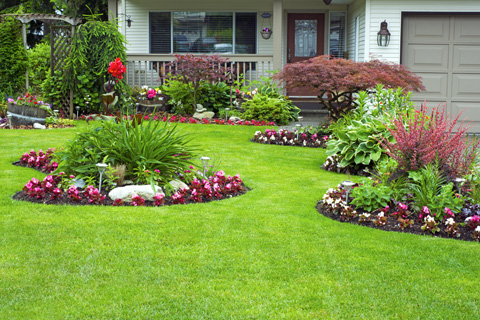
You don’t need a landscape expert to tell you that your lawn is under intense heat when the summer sun arrives. This is why you must proactively take care of the lawn and prepare so that it will retain its health and appearance.
Summer is when many homeowners choose to list and present their home to buyers. The exterior – lawn, landscaping, and curb appeal – is what will draw and attract buyers to your home.
Keep your garden and lawn fresh this summer by following these simple and easy to implement tips:
1. Keep Chemical Fertilizers Away from Your Plants
Organic and natural solutions are typically best when compared with chemical fertilizers. Though chemical fertilizers can ignite growth and vitality, an unintended counteraction may leave you with an insect infestation problem.
This issue arises as using fertilizers during summer encourages super growth, which would require more pruning, trimming, mowing and watering. This creates a problem because as you overwater the plants, insects will invade the plant. Use natural solutions to treat and care for your plants, and if you have insect problems, see 72tree.com/using-dormant-horticultural-oil-treat-tree-insect-infestations/
2. Always Mow Your Yard and Prune your Trees
Give your lawn, shrubs, and trees that wonderful view when you regularly mow your yard, trim and prune your trees. You will be proud of yourself when you go to relax in the garden and you begin to enjoy the rich view and healthy smell.
Your soil conditions and type of grass will determine the frequency at which it should be cut. 3 inches is an optimal height for summer, but be aware that cutting your grass too low, will lead to weed invasion and heat damage.
Weeds are another thing to tame because they can rob your soil and grass of valuable nutrients. This may eventually lead to their taking over your yard. Keep your lawn cut, watered, and free of weeds.
Tree trimming is not only done for aesthetics and safety reasons, it also actually improves the overall health of trees shrubs. Structural appeal is important, but pruning boosts the development and growth of your plants when performed properly.
For more on tree pruning visit treecareadvice.blogspot.com/2016/03/tree-pruning-why-how-and-when-to-prune-trees.html
3. Strategically Plant and Water Your Landscape
When planting, take into account the amount of direct sunlight needed for each species. Identify the locations in your yard that have partial shade, and use these as needed. You want to add mulch to your flowerbeds to keep pests off and retain moisture in the roots.
You might want to consider watering your plants adequately and often if you reside in an area that is overly dry. You’ll be surprised at the rate to which plants dry up during the summer months. Create a simple schedule and do your best to prevent that from happening.
When watering, make sure you water deeply so that it will get to the roots of the plant because that’s where the “engine” of the plant is.
Tip – Some decorative plants are drought tolerant and don’t require frequent watering. Lithops, Wallflowers, and Verbenas are beautiful flowering plants that have a great low to moderate watering tolerance.
Maintenance of Your Landscape
There’s a different maintenance routine for all properties and landscape. It is highly advisable that you seek the services of a professional in Landscape on deciding the best method for maintenance of your property. Always remember that your landscape is what will attract visitors and buyers alike to your property, so be sure to dish out a best first impression.
Notice: Undefined variable: page in /home/vrxdg1855sn3/public_html/wp-content/themes/72tree/content.php on line 15
Notice: Trying to get property 'ID' of non-object in /home/vrxdg1855sn3/public_html/wp-content/themes/72tree/content.php on line 15
Preventing Fire Blight Tree Disease
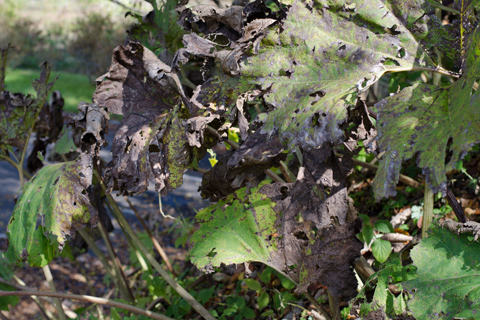
What is Fire Blight Tree Disease?
Fire blight is a hard to control disease of fruit trees like pear and apple. It is caused by bacteria, its effects are devastating and it leaves a behind a burnt appearance; this is where it gets its name from. In addition to fruit trees, it attacks ornamental plants like roses, cotoneaster crabapple, loquat, hawthorn, pyracantha, and mountain ash. Unlike dieback, fire blight attacks flowers first, twigs next and finally branches.
Signs of this Disease
The first signs of fire blight usually appear in early spring, when the weather is humid and rainy and when temperatures rise above sixty degrees. Flowers infected by the disease turn black and die. The disease moves through the branch, infecting and killing young twigs. These dead twigs go black and curl over like a shepherd’s hook.” Affected branches look fire scorched as their leaves are black and wilted. Cankers, which are slightly sunken areas show up on the branches and the trunk. Fire blight affects many parts of the plant including leaves, stems, fruits and blossoms. In wet spring weather, a translucent milk-like, sticky liquid that contains multitudes of bacteria oozes out of the infected part of plant.
Fire blight spreads effortlessly in a lot of different ways and through different means, they include:
• Insects, birds, and animals transmit it from one plant to another.
• Rain drops splashes the bacteria among plants.
• Plants make contact all the time, that way the bacteria can move from an infected plant to an uninfected plant.
• Gardening tools can transmit the disease when gardening or even when watering. Tools should be sterilized after use on an infected plant.
Late spring or early summer is the maximum time of risk of infection. At this time, the bacterial emerges from its dormant period and the cankers become more pronounced. Infected branches should never be left on the ground when pruned, they should be immediately burnt or put in a bin as placing them on the ground could infect the surrounding bushes or trees.
Commonly Affected Plants
In your home garden, fire blight can be very damaging to pear and apple trees especially pear trees as they are very susceptible. Some pear trees, (e.g. Bradford) are unaffected by the disease but can develop it when the environment is advantageous to disease development. Some plants in the rose family such as the Rosacea, can be infected with fire blight, others include; mountain ash, photinia, crabapple, hawthorn, loquat, pyracantha, spirea, cotoneaster and quince.
Prevention & Treatment
Fire blight has no cure thereby making prevention very important. Though there are many ways to control fire blight, these methods are not 100% effective. Some fire blight control methods include; making use of recommended sanitation measures and cultural practices, choosing tolerant varieties, and applying bactericides and insecticides.
Bactericides & Insecticides: Bacteria enters plants through fresh wounds, blossoms or natural openings, it is then spread by rain and insects such as ants, bees, aphids, beetles and flies who transfer the bacteria to blossoms. Insect control can decrease the spread of bacteria, however, insecticides shouldn’t be used when plants are blooming. To learn more about disease and pest prevention oils, visit: 72tree.com/using-dormant-horticultural-oil-treat-tree-insect-infestations/
Sanitation Measures & Cultural Practices: all infected plant parts should be removed and destroyed, and all pruning tools should be disinfected with household bleach and water (one part bleach and nine parts water). This will lead to a reduction in the spread of the disease. Cuts should be made at least 8 to 12 inches beneath the infected tissue.
Pears: Pear trees can be treated with a copper fungicide spray (pre-bloom) and a streptomycin spray in bloom. The first spray should be applied immediately the flowers open and should be repeated every three to four days. There should be a minimum of fifty days between the application of streptomycin and harvesting of fruits.
Apples: If fire blight was severe the year before, then copper fungicide should be sprayed just before bloom. All branches and spurs should be thoroughly covered with streptomycin spray which is the recommended bactericide for apple trees in bloom. It should be sprayed first at the beginning of bloom and should be repeated every three to four daysas long as there are flowers.
Crabapple: copper fungicides are also used to treat crabapple trees. In other to lessen bacterial inoculum on the exterior of twigs and spurs, they should be applied before and after bloom. It shouldn’t be applied when plants are blooming as it may cause fruit abortion or russeting on the plant.
Arborists Discuss Controlling Tree Disease
Scheduling an annual inspection of your landscape is another way to prevent and treat tree disease. When you detect that something has gone awry with your trees and plants, contact your local tree professional. Properly identifying and treating the issue is key to halting it and preventing future occurrences.
Sources:
http://www.clemson.edu/extension/hgic/pests/plant_pests/veg_fruit/hgic2208.html
https://www.extension.purdue.edu/extmedia/BP/BP-30-W.pdf
Notice: Undefined variable: page in /home/vrxdg1855sn3/public_html/wp-content/themes/72tree/content.php on line 15
Notice: Trying to get property 'ID' of non-object in /home/vrxdg1855sn3/public_html/wp-content/themes/72tree/content.php on line 15
Signs of a Diseased Tree – Dieback, Tree Suckers & Water Sprouts
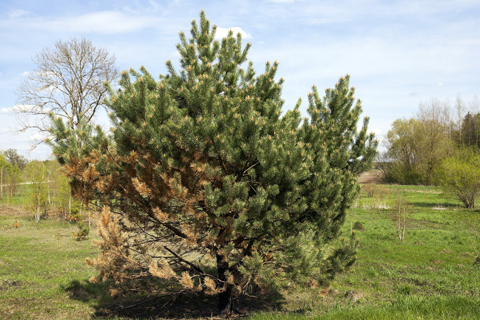 Spruce with dieback needs tree care to preserve healthy landscape.
Spruce with dieback needs tree care to preserve healthy landscape.
Many diverse diseases affect your landscape, shrubs and trees. Identifying these diseases is critical because, not all tree diseases can be controlled. We love to watch things grow when we garden but we must note that not all growth is positive or advantageous to the trees. Some of these growths take energy away from the tree; common examples include water sprouts and suckers. At 72tree.com we often see the damaging effects of tree disease, and in this article, dieback, tree suckers and water sprouts are the disorders we’ll be discussing.
Dieback of a Tree or Its Limbs
In spring as the weather gets warmer, and buds start noticeably leafing out, you might notice that a section or even an entire limb is not leafing out consistent with the rest of the tree. Dieback is a condition in which the ends of the tree branches die. These sections are generally located at the limb tips, but can also be entire limbs or sections of the tree where there will be no leaves. Most times, this is a sign that all is not right with the tree.
Water Sprouts Due to Branch Removal
Water sprouts are dynamic shoots that develop from dormant buds either on large branches or trunks of a tree. They are usually upright and in many cases occur as a result of the removal or trimming of large branches. Heavy pruning may also lead to the production of more sprouts. Tree stress may also result in water sprout growth, but it’s not usually as vibrant as those that occur due to pruning.
Trees should be checked regularly. If you notice new shoots, eliminate them by rubbing them off as they emerge. Large water sprouts can be pruned off close to the trees trunk. Water sprouts can ruin a tree’s shape and they also divert the tree’s energy by blocking air circulation and light. Though not advised, some allow sprouts to grow in the place of missing branches, but it may lead to a reduction in quality of the tree’s ability to bear more fruits. Also, water sprouts are more inclined to promote tears, disease and breaks, as they are generally weaker than other branches.
Tree Suckers
Suckers are un-planned, vegetative growths that stem from a tree’s root system. Suckers grow from rootstock and divert nutrients away from the trees top growth. There isn’t any actual benefit from letting suckers grow because, rootstocks are usually different from the type of tree that you planted (example – a Gala apple tree will not have a Gala apple rootstock).
To find and cut from the base of a sucker, you may have to pull back any ground cover and dig up some soil to fully expose the sucker. Ensure that as much growth as possible is removed to reduce the potential of them popping up again. If they do re-emerge, this simple process will have to be repeated. Although suckers and water sprouts are similar, remember suckers originate from the root or base of the tree.
Tree Disease Prevention and Care
You might be able to deal with a disease that occurs on your trees and shrubs but you ought to consider consulting a local arborist or tree service professional if you are uncertain. The arborist will identify any disease and offer you the best treatment options and the ideal time to care for the tree.
Early spring (during most maintenance pruning) is the best time to remove both water sprouts and tree suckers. However, these unwanted growths sometimes sprout and occur during the growing season, they should be removed as soon as you notice their existence. Your trees will thank you and be fruitful!
Notice: Undefined variable: page in /home/vrxdg1855sn3/public_html/wp-content/themes/72tree/content.php on line 15
Notice: Trying to get property 'ID' of non-object in /home/vrxdg1855sn3/public_html/wp-content/themes/72tree/content.php on line 15
5 Common Shrub Species Found in Alpharetta Ga
When speaking of Atlanta suburbs, the city of Alpharetta is sure to steal the conversation. One striking trait in this suburb is the abundance of trees, shrubs and well-manicured yards. While there are dozens of attractive plants we could share, our arborist explains characteristics of 5 shrubs that are sure to impress and perfect for your Alpharetta Ga yard.
Characteristics of 5 Shrubs That Are Ideal for Alpharetta Yards
Plants, trees and shrubs require certain conditions to thrive and grow into healthy specimens. Knowing the watering, sunlight and soil requirements of a shrub will help ensure it develops properly.
Our Alpharetta tree removal and planting experts are available to help you choose the ideal shrubs and trees for your yard. However, these 5 shrub species develop nicely and are commonly planted by residents of Alpharetta.
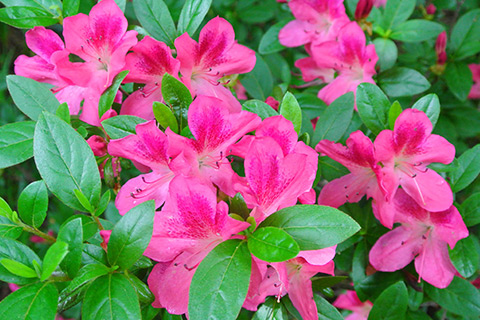 Rhododendron – With the ability to reach a height of 15 feet or more, your hedge solution is at hand. Rhododendron is the national flower of Nepal – Ask your friends where that is! The conversation alone makes this stunning species worth it!
Rhododendron – With the ability to reach a height of 15 feet or more, your hedge solution is at hand. Rhododendron is the national flower of Nepal – Ask your friends where that is! The conversation alone makes this stunning species worth it!
Planting on the North side of a building – protecting it from morning sunlight is optimal for this species. Overwatering will cause a waterlogged root system that may lead to plant failure, while under watering can also damage these shrubs. Fertilize annually in the fall or early spring for best results.
Blooming from the end of winter through early summer, there is an added bonus to having this shrub. Hummingbirds will be racing through your landscaping attracted to the blooms. Thus, adding one more element of desirability to choosing a Rhododendron.
Florida Anise – With fruit shaped like a star, Florida Anise has been popularly dubbed as Star Anise. This evergreen shrub grows to a whopping 10 to 12 feet in height and 5 to 8 feet wide. It thrives in rich and moist soil being best suited for shade with morning sun. However, this beauty – once established – possesses a high tolerance to drought conditions.
A fun snippet about the Florida Anise is that it protects itself with poisonous aromatics in the foliage deterring animals and insects from making it a meal.
Camellia Japonica – Commonly known as ‘Rose of Winter’ – its Alabama’s state flower. With thousands of cultivars having varied colors and forms of flowers, creating diversity in the landscape will be a cinch.
This stunner blooms in winter and early spring and thrives in a semi-shade environment with moderate to regular watering. Given the ideal conditions, just sit back and be amazed at just how beautiful this shrub can be.
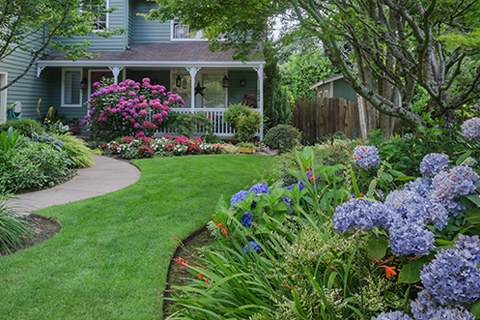 Hydrangea – If strength combined with beauty is your aim, the Hydrangea is certainly the right pick for your yard. Well known for its large, circular blooms, it steals the show by staying in bloom from the beginning of spring to late fall. That’s right, while the others are full of nakedness, the Hydrangea keeps putting on a show.
Hydrangea – If strength combined with beauty is your aim, the Hydrangea is certainly the right pick for your yard. Well known for its large, circular blooms, it steals the show by staying in bloom from the beginning of spring to late fall. That’s right, while the others are full of nakedness, the Hydrangea keeps putting on a show.
Location is key. You will want to protect your Hydrangeas from strong winds and hot afternoon sun – planting them on the East side of a building will help create a shaded afternoon. Overwatering will cause the roots to rot, killing the shrub. In the beginning, an all purpose slow-release fertilizer are helpful in ensuring a strong start to an incredible shrub!
Those beautiful blooms come in an array of colors including; white, blue, pink lavender and rose – at times with multiple colors on the same shrub. This color variety occurs with the pH level of the soil, however, the white bloom is unaffected by this factor.
Fatsia Japonica – If you are looking to fill a spacious area with an explosion of green, look no further! This evergreen shrub – native to Southern Japan and South Korea – reaches an astounding 10 to 20 feet tall with its leaves spiraling up its branches creating beautiful symmetry.
Medium to full shade with compost rich and moist soil is a winning ticket for the Fatsia Japonica. A semi-protected location is important, as strong winds and excessive sunlight tend to damage the foliage. Fertilize annually with a tree and shrub fertilizer in the spring.
Sometimes referred to as the ‘Paper Plant’, its small white flowers make an appearance in late fall and early winter. Those same flowers give way to a small black fruit. This shrub makes for an excellent conversation piece in a well-structured garden.
Use Shrubs to Improve the Appeal of Your Landscape
In addition to the striking colors, the addition of healthy shrubbery to a landscape cannot be overstated. Properly planted and arranged shrubs will help prevent soil erosion and in many cases, raise the property’s curb appeal!
Whether it’s filling in the gaps or structuring a hedgerow, the aforementioned shrub species are sure to create an impressive and practical landscape. Familiarize yourself with the conditions of your yard, then choose the best suited shrub for a beautiful addition to your landscape.
Notice: Undefined variable: page in /home/vrxdg1855sn3/public_html/wp-content/themes/72tree/content.php on line 15
Notice: Trying to get property 'ID' of non-object in /home/vrxdg1855sn3/public_html/wp-content/themes/72tree/content.php on line 15
5 Popular Alpharetta Georgia Shade Trees
If there were ever to be a change to the name of this city it would have to include – ‘Tree Friendly’. Alpharetta Georgia is home to not one or two but three Arboretums! Cogburn Road Park, Webb Bridge Park and Wills Park all provide a walk through amazing native specimens.
Trees have a tendency to provide and support a natural eco-infrastructure. Nesting birds, mischievous squirrels and plant life thriving in the shade of the canopy are a few examples of how trees share their life with their surroundings.
Our Arborists Share the Basic Characteristics of 5 Shade Trees
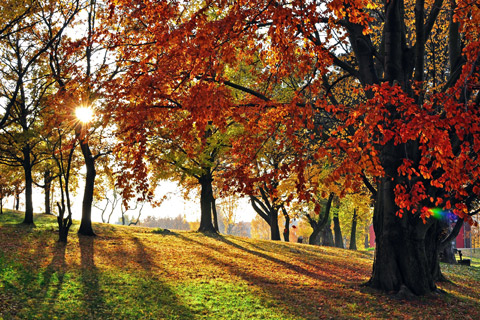 Red Maple – When Red Maples turn brilliant scarlet in the fall, the song lyric “Goodness, Gracious, Great Balls Of Fire” may come to mind. If color explosions are your autumn heart’s desire, this shade tree is a must have on your list.
Red Maple – When Red Maples turn brilliant scarlet in the fall, the song lyric “Goodness, Gracious, Great Balls Of Fire” may come to mind. If color explosions are your autumn heart’s desire, this shade tree is a must have on your list.
Red Maples when mature, can reach upwards of 80 feet, but most mature at 50 feet. These specimens have a canopy spread of up to 40 feet, and display the stereotypical range of fall green, yellow and red hues.
This extremely robust tree has been recognized by the US Forest Service for being eastern North America’s most populous native tree. Next to their fall foliage, their resilient qualities to remain healthy through weather and soil severities play a large part in their popularity.
From low to high altitudes and from swamps to arid soil, Red Maples are able to adapt, which makes them an ideal tree to shade your backyard.
Eastern Redbud – The state tree of Oklahoma reaches 20 to 30 feet in height with a canopy diameter of 25 to 30 feet. The Eastern Redbud has beautiful green leaves, turning to bright yellow in the fall before losing them.
The true show is revealed in the spring. This tree flowers before and with emerging leaves, continuing into early summer. The light to dark pink flowers bloom in clusters, eventually giving way to its fruit. The fruit are flat pea-like pods, with maturation occurring from August through October.
With the reds and yellows fighting for your attention, it would be an epic sight to come across a row of alternating Red Maples and Eastern Redbuds in the fall?
Willow Oak – ‘Weeping Willows’, as they are popularly known, have those mesmerizing leaf laden branches draped towards the ground gently waving in the slightest of breezes.
While highly desirable, the Willow Oak is not an ideal tree for all Alpharetta yards. This species should be discussed with your local tree expert before coming to any conclusions.
With a short trunk and broad canopy, mature trees reach 50 feet high and 40 feet across. The most suitable environments for these species are along riverbanks and ponds where the roots can run freely.
In their non-stop hunt for water sources, Willows are known for their invasive root systems potentially interrupting sewer and water lines. Preferring full sun, Willows are the first to produce leaves and last to shed them in the fall.
Red Oak Trees – The Red Oak gallantly reaches upwards of 75 feet with an amazing canopy spread of 50 feet.
As they are fast growing, robust and expansive canopy trees, Red Oaks are a piece of perfection in the land of shade trees.
The bark of a mature Oak looks to have wrinkly ridges running up and down. If your potential was to live to be 500 years old, you might develop a few wrinkles too.
All in all, the iconic Red Oak truly is a perfect fit for Alpharetta yards and a perfectly shaded landscape.
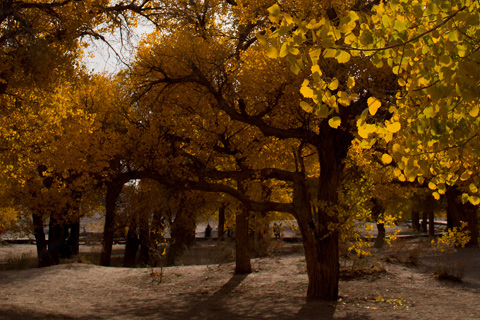 Yellow Poplar – This quick to develop tree can reach 160 feet in height, but is ordinarily about 85 feet. Their development is counter-intuitive in that they grow slower and shorter in full sun, and taller in shaded areas.
Yellow Poplar – This quick to develop tree can reach 160 feet in height, but is ordinarily about 85 feet. Their development is counter-intuitive in that they grow slower and shorter in full sun, and taller in shaded areas.
The Yellow Poplar is the tallest eastern hardwood tree. Like the Red Oak, this shade thrower lives up to 500 years old as well.
Sitting erect, the flower of this amazing tree is greenish yellow with red and orange dashes, with a striking resemblance to a tulip, thus the nickname, ‘Tulip Tree’.
This specimen tree does better in soil with high amounts of organic matter, due to its fragile and fleshy roots. Likewise, it has a poor tolerance to drought.
Outstanding Shade Trees for Your Alpharetta Yard
Trees partner with surrounding vegetation to halt soil erosion and even provide natural fertilization when their fallen leaves decay. The high temperatures during the summer months make shade trees desirable to Alpharetta residents. Once planted, prune your trees so they grow a nice full canopy. With that in mind, make informed specimen selection decisions leading towards a beautiful, balanced and well-shaded landscape.
